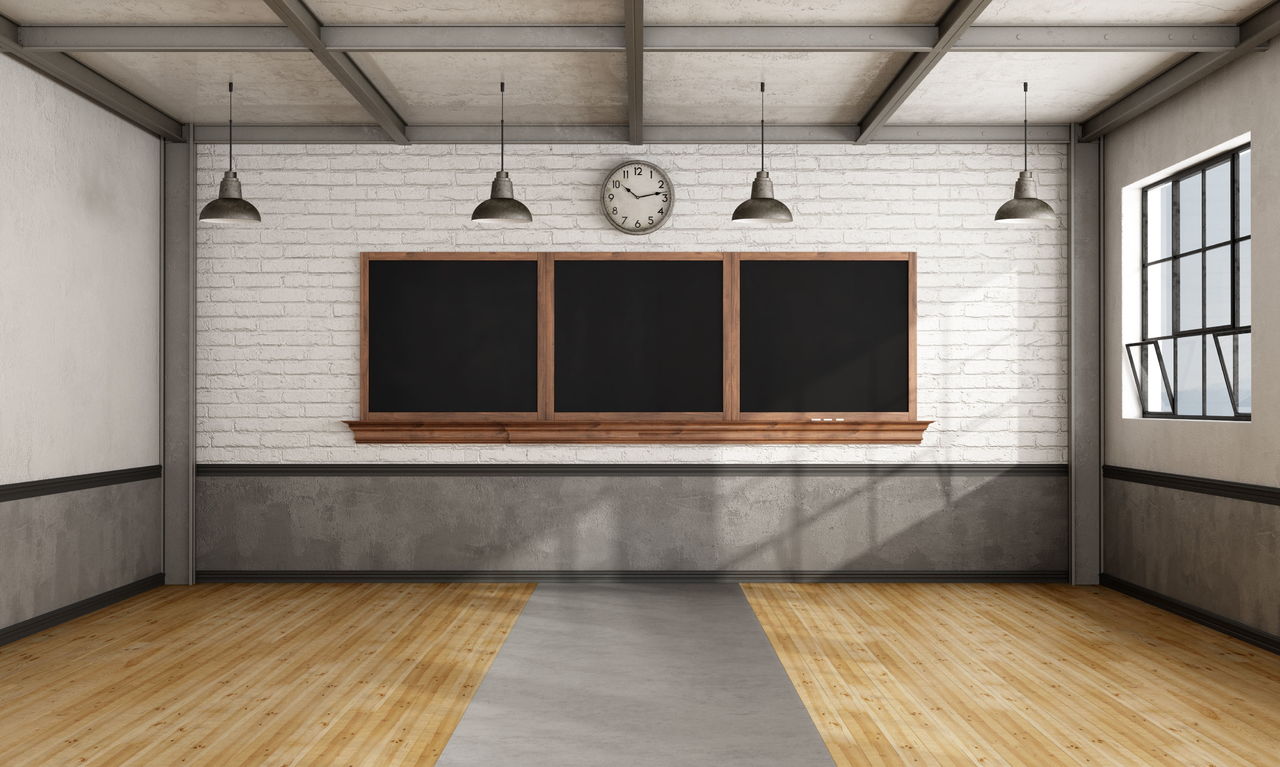We can argue all day about the role of government in our economy, but there are two areas where that role is widely agreed to be essential: education and public infrastructure. Well, there’s a great way to roll those roles together: a deep investment in the quality of our public school facilities.
Here are some facts to get you thinking about the scope of the problem, from a careful and timely new study by three groups that brought some heavy analytic firepower to this question of the state of our schools:
Every school day, 50 million students and 6 million adults (mostly teachers) meet at the 100,000 K-12 public schools nationwide. These buildings, along with supporting areas, such as bus lots and storage areas, comprise 7.5 billion square feet, the equivalent of half the total commercial space in the country. After highways, this is the biggest piece of our public infrastructure.
Although considerable variation exists, the average age of the main building of a public school today is about 44. That means many roofs, windows, boilers and ventilation, plumbing and electrical systems need to be fixed, upgraded or replaced.
Although the local share of operating costs is 42 percent, localities are responsible for 82 percent of capital costs (which is what pays for infrastructure). Given the increase in income inequality by place, that fact automatically maps inequality into our public education infrastructure.
That imbalanced investment formula is especially damaging given the relationship between learning and learning environment. “Because local wealth is the primary source of capital construction funds, underinvestment disproportionately affects children from low-income families. The results affect both students’ well-being and their educational opportunities.”
I find this last point particularly motivating. When a child who is already held back by disadvantages in her neighborhood attends a school with poor air quality, hazardous materials, poor acoustics and inadequate heating and cooling, research shows she will have a new set of problems. Those conditions are correlated with elevated levels of truancy, absenteeism, higher teacher turnover and even lower student performance.
Other new research on this issue from my colleague Liz McNichol at the Center for Budget and Policy Priorities confirms that schools with the poorest students need the most repairs.
Of course, we should fill the potholes. But the above linkages — neighborhood inequality, local funding of public school infrastructure and the negative impact of impaired facilities — suggest that these investments could make critical, lasting differences in the lives of less advantaged kids.
The report makes a solid case for spending an additional $46 billion a year for school maintenance and operation ($8 billion), and construction ($38 billion); that’s about a third less than we’re currently spending.
Again, there’s great variation here. Some localities are pulling this off, often by dedicating a stream of funding to this purpose. New Mexico dedicates oil and gas revenue (Wyoming uses coal revenue); Ohio used revenue from its tobacco settlement; in Georgia, Iowa and Massachusetts, a portion of sales taxes pay for school construction. South Carolina recently passed a statewide property tax to help fund facilities and balance the inequities described above.
But most others just muddle through, and this problem is too important to leave to chance. Two ideas, a small one and a big one, come to mind.
The small idea, or maybe better framed as “temporary,” is a one-time federally funded investment in bringing the most neglected school facilities up to present standards. I’ve worked with others in the past on this idea, and we pushed FAST! (the “!” is part of the title, like a Broadway show) — Fix America’s Schools Today! The bill garnered some bipartisan support in former Congresses.
Interest rates are low, there’s still slack in the job market and the benefits here, especially over the course of these kids’ lives, may well outpace the costs. We should do this, and FAST!
But the report correctly notes that absent a longer-term fix, most facilities will eventually fall back into disrepair. As noted, a lot of state experimentation is going on in this space, and one obvious way forward is for states to educate one another, an idea that’s being operationalized by one of the report’s authors, the National Council on School Facilities.
Ultimately, there needs to be a federal role here as well. At a minimum, the feds could help with information dissemination regarding best practices for facility upgrades and upkeep. But one could also see a role, perhaps out of Environmental Protection Agency, for funding health-related upgrades around issues such as the lead in school water fountains, a truly outrageous development, but also asbestos, mold, PCBs, radon and so on. Or the Energy Department could support the greening of school infrastructures, replacing boilers, windows and roofing, an initiative that also would generate savings against heating and cooling costs.
When most of us hear the word “infrastructure,” we typically think “roads and bridges” (along with, maybe, “boring”). But perhaps if we think “schools,” including the ones right down the street, the one attended by your kids or the kids from your block, we can bring this idea closer to home.
We all talk a lot about how much we care about education. But when our children enter many of the school buildings where they spend their days, they know we don’t mean a word of it. Let’s change that.
Jared Bernstein is a senior fellow at the Center on Budget and Policy Priorities. Bernstein was the chief economist and economic adviser to Vice President Joe Biden from 2009 to 2011.
Talk to us
> Give us your news tips.
> Send us a letter to the editor.
> More Herald contact information.

























